
Coola Exploration Project
A Significant Rare Earths Discovery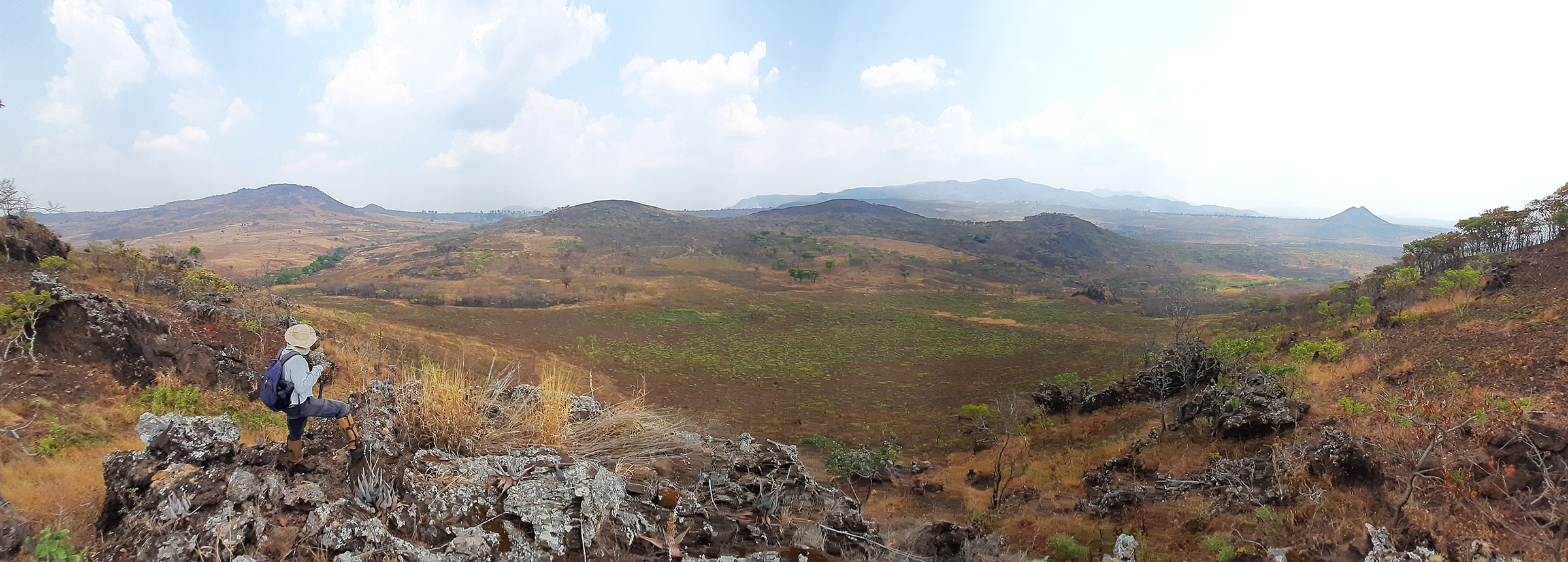
The Coola Exploration Project License is located in central Angola, north of Pensana’s Longonjo Rare Earth Refinery Project.
Since the award of the prospecting license in March 2020, multiple field programs have been undertaken involving stream sediment sampling, soil sampling, geological mapping, rock chip sampling, trench and pit sampling, geophysical surveying, preliminary mineralogical investigations and assaying. The outcome of this work has been the identification of two highly prospective target areas upon which future workstreams are focused, namely:
- Coola carbonatite – which comprises a REE enriched carbonatite ring dyke, a potentially supergene REE enriched sand covered central diatreme and a high-grade fluorite in fenite occurrence.
- Sulima West – where high grade REE mineralisation in laterite and phosphate in an apatite/maghemite have been discovered.
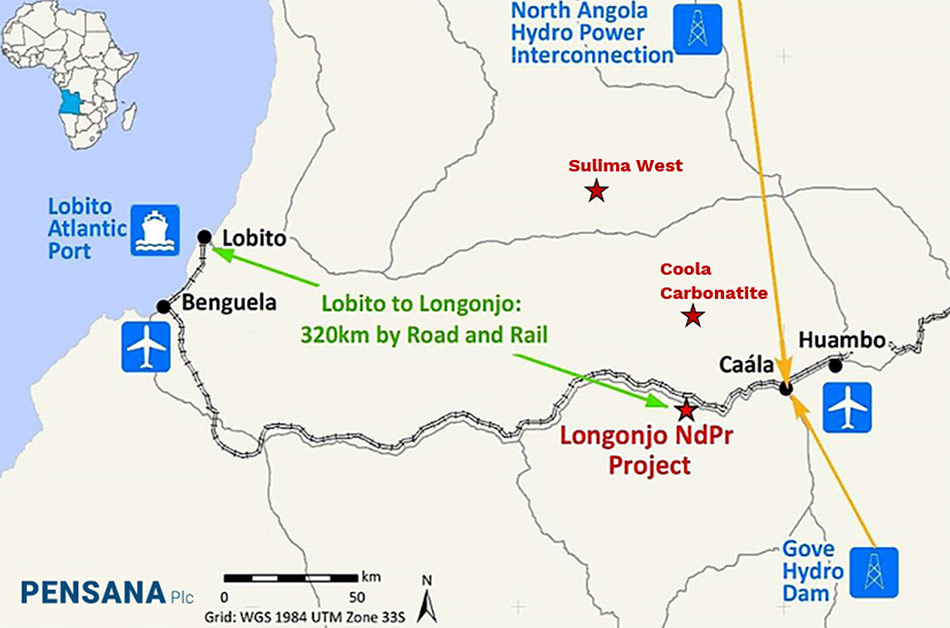
Exploration Manager, Grant Hayward:
“We are extremely excited to find extensive rare earth mineralisation at both Coola carbonatite and Sulima West. We are currently conducting metallurgical ore characterisation studies with the aim of upgrading the REE bearing material physically at each site and transporting the concentrate for processing and recovery of REE’s at the Longonjo facilities. In addition to rare earths, fluorite mineralisation at Coola carbonatite and high-grade phosphate mineralisation at Sulima West, adds additional economic potential”.
| Location | Central Angola |
| Sulima West – Alkaline complex with rare earth element and phosphate ( P2O5) enriched regolith | |
Geology | Coola Carbonatite - Alkaline complex with bastnaesite enriched carbonatite ring dyke |
| Minerals | Rare Earth Elements, fluorite, phosphate and manganese |
| Licensing & permitting | Exploration License |
| Ownership | Pensana Plc 90% Angolan Interest 10% |
Coola Carbonatite
The Coola carbonatite is a roughly circular 900 metre wide body and comprises an incomplete carbonatite ring dyke surrounded by fenite, enclosing a soil covered central diatreme of roughly 600 metres diameter.
The northeastern outcropping portion of the ring dyke attains widths of 50 metres and comprises fresh pink dolomitic carbonatite containing up to 5 % TREO.
Initial mineralogical studies of the dolomitic carbonatite identified the associated rare earth mineral to be bastnäsite (>10 mass %) which occurs as discrete veins, veinlets, and segregations within the carbonatite. Beneficiation testwork on samples of this carbonatite are in progress. Definition drilling of this ring dyke will be considered should the current metallurgical testwork programme prove that an acceptable grade TREO concentrate can be physically produced on site. The primary concentrate may then be amenable for further REE processing at the Longonjo facilities.
The ground magnetic survey clearly identifies a large, circular diatreme with a unique magnetic signature occupying the central caldera which potentially hosts supergene enriched REE mineralisation as encountered at Longonjo. The potential for a supergene enriched REE deposit beneath the ferricrete cap encountered during augering, will be investigated by the drilling program anticipated in the latter part of 2024.
Soil sampling, mapping and geophysical surveys identified an area of roughly 15 000 m2 with >17% (Calcium Fluoride) CaF2 in fenite and mapping in this area has identified zones containing up to 50% CaF2. Beneficiation testwork on samples of fluorite rich fenite is in progress. Further work will be considered should the current metallurgical testwork programme prove that an acceptable grade and marketable fluorite concentrate can be physically produced on site.


Coarse Bastnaesite Grain
Sulima West
Sulima West is a roughly 5-kilometre diameter alkaline ring complex with a corresponding high radiometric response. Ten historic trenches each of about 90 metres in length located in the western segment of the structure were identified from satellite imagery and corresponded with the highest radiometric response.
The trenches are excavated into an iron/manganese-rich laterite very similar in appearance to the rare earth element laterite developed over the Longonjo carbonatite. Initial reconnaissance sampling of the trenches returned significant values for rare earth oxides with up to 10.6% TREO encountered in the laterite. Manganese oxide values of up 15.9% MnO were also reported.
Close spaced soil sampling clearly identifies a rare earth enriched zone of 15 hectares with >2% TREO in soils. In 2022, initial trench and pit sampling of the laterite were conducted, reporting rare earth grades of 3.4% TREO over 68 metres in Trench 1 and 4.3% TREO over 6 metres in Pit 1.
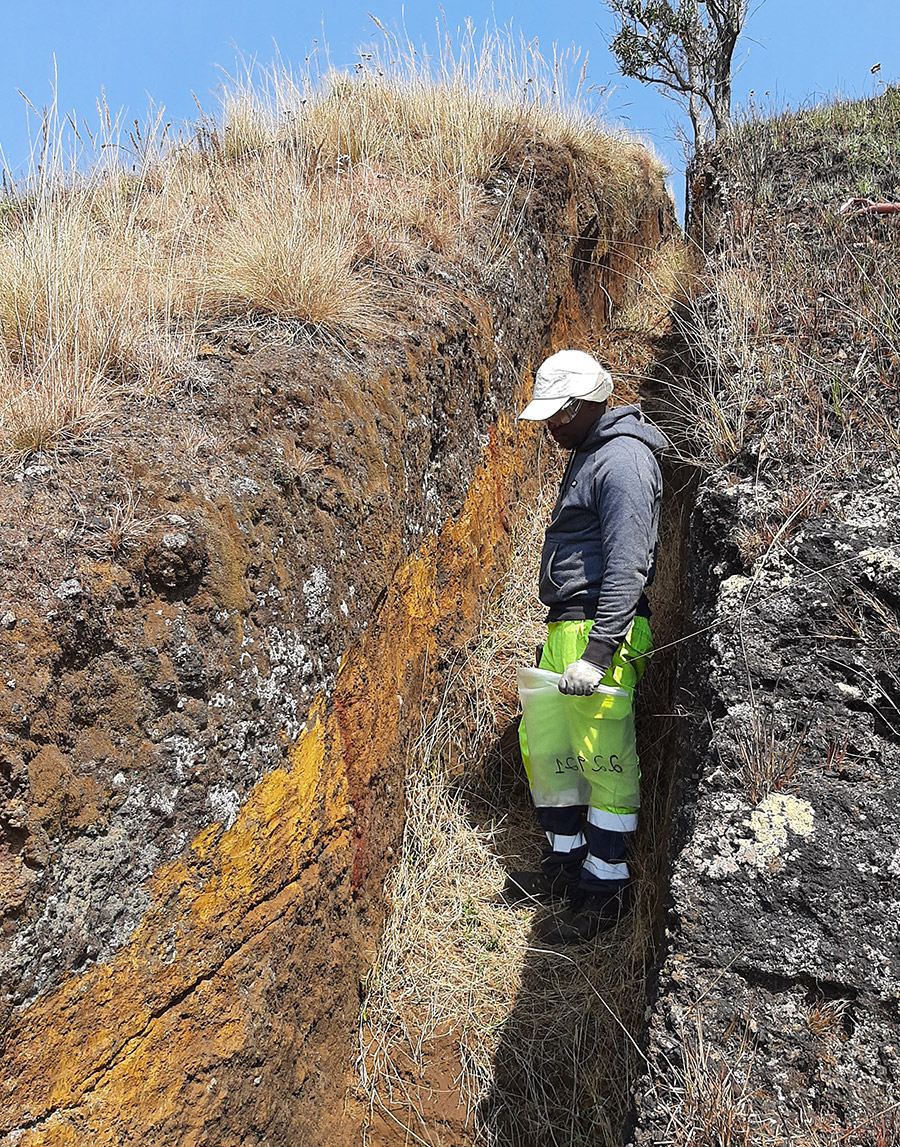
Channel sampling laterite exposed in Trench 1 (68 m)
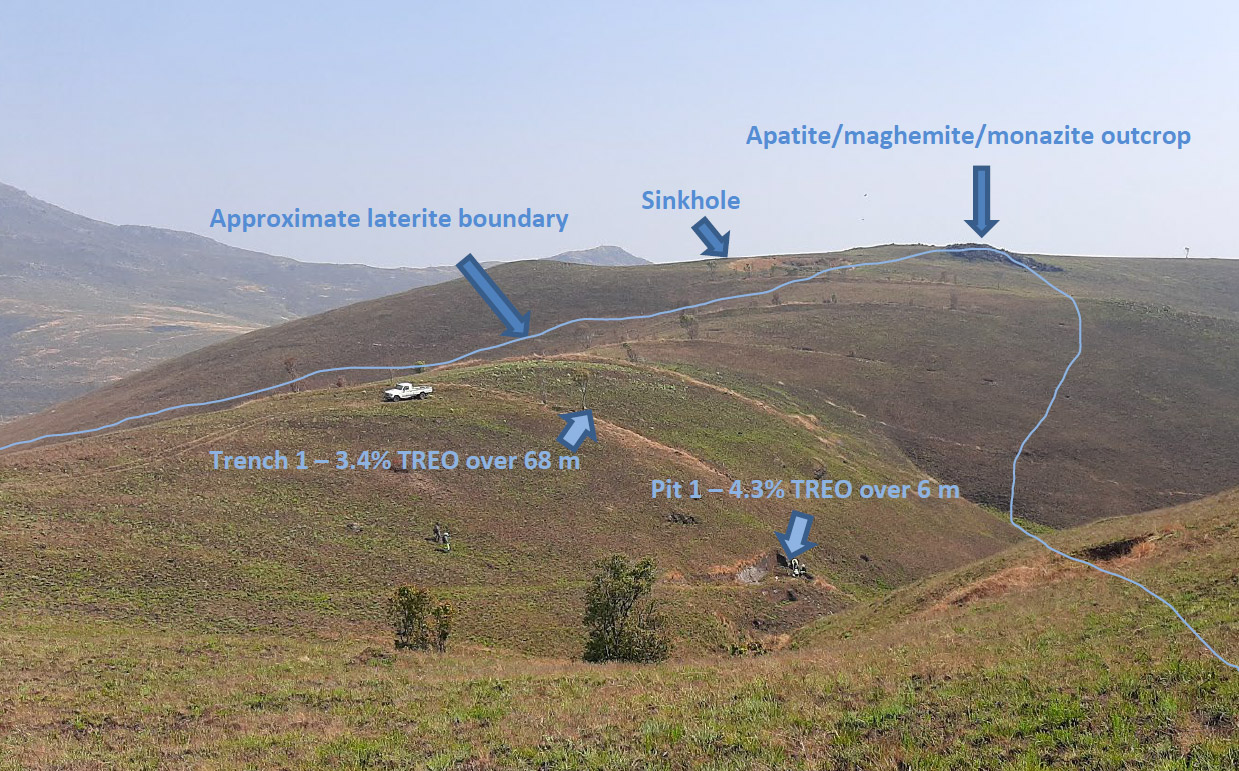
Sulima West Target Area
Preliminary Mineral Liberation studies on the laterite indicate that the REE bearing phases are monazite, bastnäsite and florencite showing moderate liberation and exposure. Metallurgical ore characterisation studies with the aim of primary physical upgrading the REE bearing laterite are currently underway.
Definition drilling will be considered should the testwork show an acceptable grade TREO concentrate may be economically produced on site for transportation to the Longonjo facility for further processing and recovery of REE’s.
In addition, a prominent outcrop of secondary apatite-maghemite was observed and sampling returned values of up to 22% P2O5. The apatite is coarse grained and easily liberated and constitutes a potential additional phosphate resource.
The presence of highly anomalous TREO of >10%, outcropping fenite, as well as significant manganese and supergene apatite, are all supportive of a carbonatite at depth.
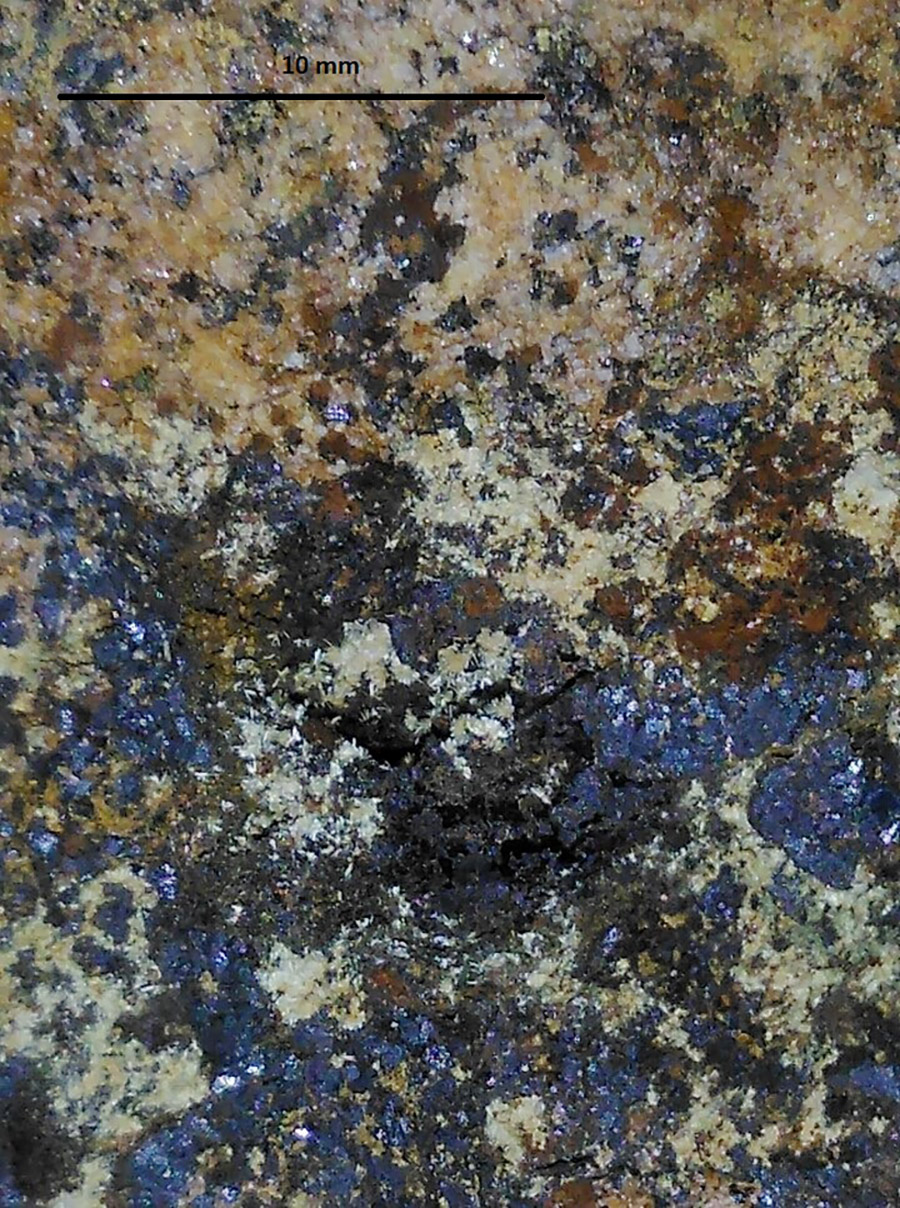
Coarse Grained Apatite-maghemite
Project History
-
Update on Coola and Sulima West Exploration Programmes
Click here to VIEW FULL NOTICE...
11 March, 2024 -
Mineralogical Results from the Coola Exploration Licence
Click here to VIEW FULL NOTICE...
14 September, 2023 -
-
Exploration Results from Coola Exploration Licence
Click here to Download the full announcement....
14 November, 2022 -
Update on the Results from Coola Exploration Programme
Click here to Download the full announcement. ...
04 April, 2022 -
Coola Continues to Deliver Strong Progress
Click here to Download Full Announcement...
27 September, 2021 -
High grade rare earths confirmed at Coola
Click here to Download Full Announcement...
21 December, 2020 -
Coola exploration programmes in full swing
Click here to Download Full Announcement...
19 October, 2020

